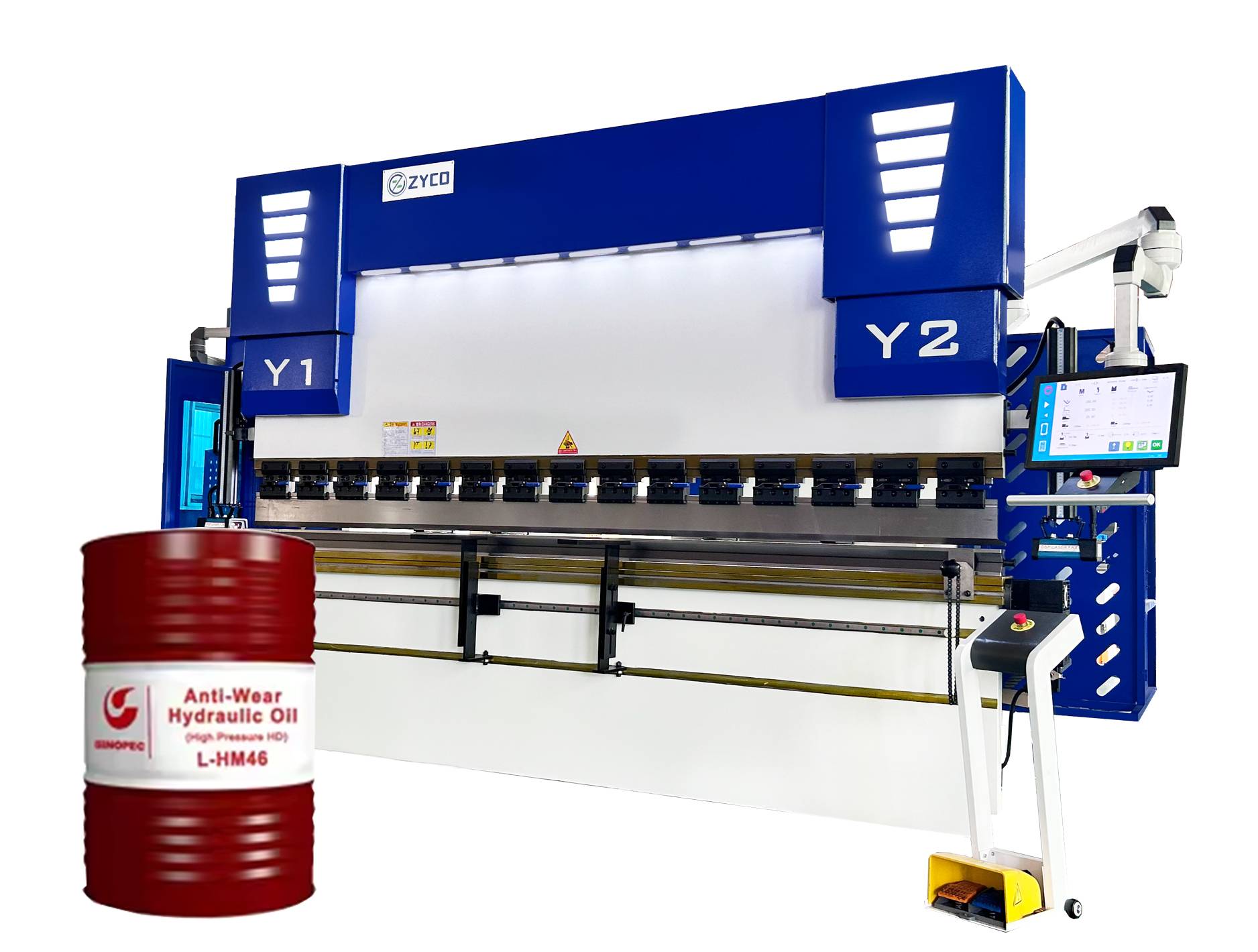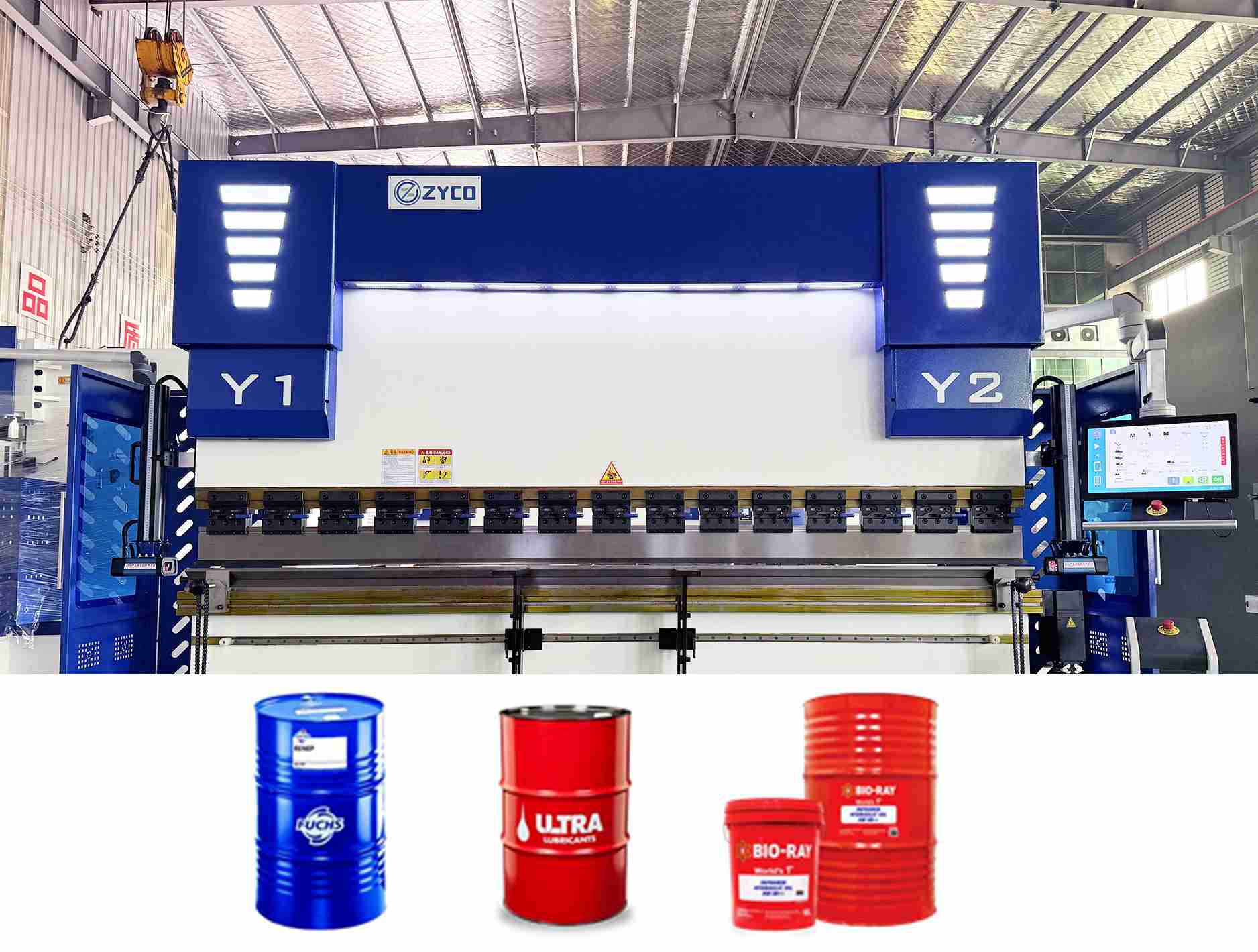Press Brakes are one of the tools widely used in the metal processing industry. When we use bending machines, we will inevitably encounter some hydraulic problems, which are closely related to hydraulic oil. Hydraulic oil not only provides power for bending machines, but also plays a role in lubrication and cooling. It is crucial in hydraulic systems and directly affects the performance and reliability of equipment. ZYCO, as a manufacturer with 30 years of experience in sheet metal equipment manufacturing, will take you to learn about the relevant information about hydraulic oil for Press Brake.

1. What are the general types of hydraulic oil ?
1.1 Mineral oil type hydraulic oil
Mineral oil is the most common hydraulic oil in the use of hydraulic oil. It has a higher cost-effectiveness and good lubricity and economy. They are usually treated with additives to improve their antioxidant and anti-corrosion properties. However, the anti-wear properties of this type of hydraulic oil are general and are suitable for general hydraulic systems.Bending machine can be used.
1.2 Synthetic hydraulic oil
Synthetic oil is made by chemical synthesis and has better temperature stability and anti-wear properties. This type of hydraulic oil has good anti-wear performance and is suitable for high-load hydraulic systems and high-temperature and high-pressure working environments.Bending machine can be used.
1.3 Bio-based oil
Bio-based oil is derived from plant or animal fats and is environmentally friendly, but the price is relatively high. It is suitable for occasions with high environmental requirements. Generally, hydraulic presses rarely use this type of hydraulic oil.
1.4 Oil-concentrated hydraulic oil
This type of hydraulic oil has the advantages of good environmental performance and low cost, and is suitable for low-cost hydraulic systems.Bending machine is not recommended.

2. Performance indicators of hydraulic oil
When choosing hydraulic oil for Press Brake, you usually need to pay attention to the following performance indicators:
2.1 Viscosity of hydraulic oil
Hydraulic oil flows repeatedly in the entire hydraulic system of the machine, and its viscosity affects its fluidity and lubricity. As the machine is used continuously, the oil temperature will rise, and the viscosity of the hydraulic oil will decrease. The flow rate will also change, which will directly affect the performance of the machine. Higher viscosity is suitable for high temperature or high pressure environments, while low viscosity oil is suitable for low temperature conditions, so users in different regions also need to screen hydraulic oil according to the temperature of the region.
2.2 Antioxidation
Hydraulic oil will inevitably come into contact with air during operation, so it is easy to oxidize and deteriorate, affecting its service life. Oils with good antioxidation properties can extend the service life, which is also related to the sealing of the machine. ZYCO Press Brake have always maintained high sealing of the oil tank, thereby reducing the contact between hydraulic oil and air and extending the use of hydraulic oil.
2.3 Anti-emulsification
Hydraulic oil may come into contact with water in the air. Hydraulic oil with strong anti-emulsification properties can effectively prevent water intrusion and ensure the normal operation of the hydraulic system.
3. Selection and maintenance of hydraulic oil
3.1 Selection
When choosing hydraulic oil, we should ask the manufacturer for advice and choose according to the working environment, workload, etc. Avoid choosing the wrong oil and affecting the hydraulic system.
3.2 Maintenance
ZYCO usually recommends that customers regularly check the status of the hydraulic oil according to the use of the machine, including viscosity, color and impurity content. If you are unable to grasp the situation, you can contact the manufacturer and replace the hydraulic oil under the manufacturer's advice. This will greatly extend the use of the hydraulic system of the Press Brake and is also the best maintenance for the seals.
4. Conclusion
Hydraulic oil is the blood of the Press Brake and plays an important role in the performance and service life of the machine. Reasonable selection and maintenance of hydraulic oil can not only improve the working efficiency of the bending machine, but also extend its service life. In the future, with the development of technology, the performance of hydraulic oil will continue to improve, providing support for the sustainable development of the metal processing industry. ZYCO will also continuously update the relevant information of hydraulic oil and provide valuable suggestions for users.






